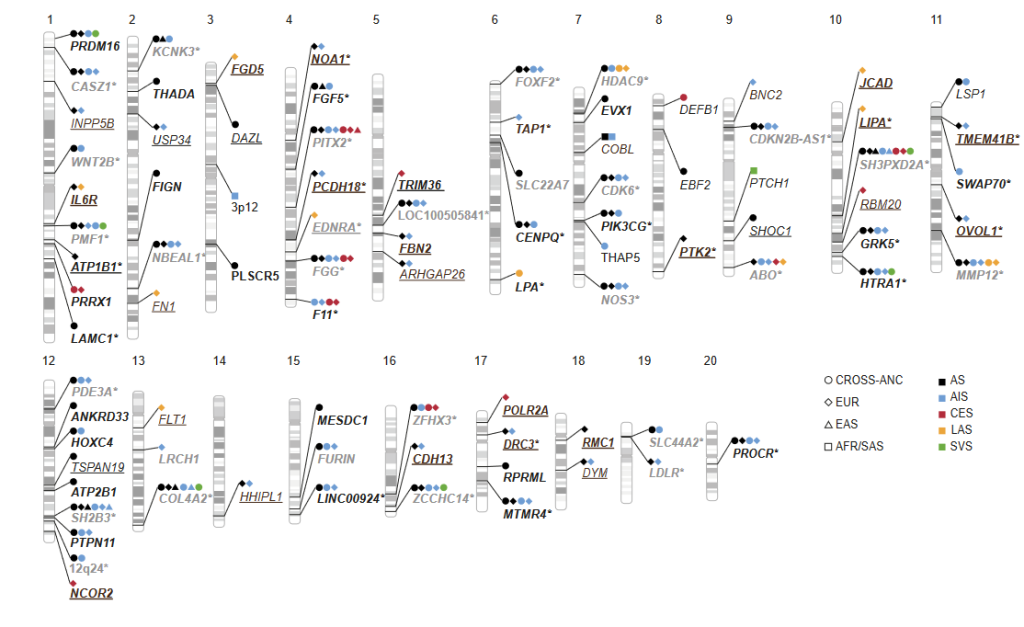The largest study on stroke genetics with more than 2M individuals (incl. >200,000 cases) has just been published in Nature! The GIGASTROKE project engaged numerous cohorts from across the globe, lead by Prof. Debette Stéphanie, coordinator of SHIVA project, and Prof. Martin Dichgans.
In this study, cross-ancestry GWAS meta-analyses were performed leading to the identification of novel loci associated with stroke risk, eighty loci are now associated with stroke.

This data gives us important messages in relation to stroke and precision medicine. Stroke genetics highlights drugs that could be used in clinical practice, some of them already in clinical trials!
We also evaluate polygenic risk scores in clinical trials, revealing independence of clinical factors and a strong association to ischemic stroke. »Compared with the middle 10% of the participants, those in the top 1% had a 2.8-fold higher hazard of ischemic stroke »
Inclusion of participants with diverse ancestry backgrounds has been of paramount importance to enhance genetic discoveries and improve polygenic risk prediction of stroke across continents.
Summary statistics are available at GWAS catalog and PGS catalog websites.
Congrats to all the authors of this splendid work and the patients and controls willing to participate!!
The publication abstract:
Previous genome-wide association studies (GWAS) of stroke — the second leading cause of death worldwide — were conducted predominantly in populations of European ancestry. Here, in cross-ancestry GWAS meta-analyses of 110,182 patients who have had a stroke (five ancestries, 33% non-European) and 1,503,898 control individuals, we identify association signals for stroke and its subtypes at 89 (61 new) independent loci: 60 in primary inverse-variance-weighted analyses and 29 in secondary meta-regression and multitrait analyses. On the basis of internal cross-ancestry validation and an independent follow-up in 89,084 additional cases of stroke (30% non-European) and 1,013,843 control individuals, 87% of the primary stroke risk loci and 60% of the secondary stroke risk loci were replicated (P < 0.05). Effect sizes were highly correlated across ancestries. Cross-ancestry fine-mapping, in silico mutagenesis analysis3, and transcriptome-wide and proteome-wide association analyses revealed putative causal genes (such as SH3PXD2A and FURIN) and variants (such as at GRK5 and NOS3). Using a three-pronged approach, we provide genetic evidence for putative drug effects, highlighting F11, KLKB1, PROC, GP1BA, LAMC2 and VCAM1 as possible targets, with drugs already under investigation for stroke for F11 and PROC. A polygenic score integrating cross-ancestry and ancestry-specific stroke GWASs with vascular-risk factor GWASs (integrative polygenic scores) strongly predicted ischaemic stroke in populations of European, East Asian and African ancestry5. Stroke genetic risk scores were predictive of ischaemic stroke independent of clinical risk factors in 52,600 clinical-trial participants with cardiometabolic disease. Our results provide insights to inform biology, reveal potential drug targets and derive genetic risk prediction tools across ancestries.